Environmental Benefits of Dry Type Transformers: Fire Safety, No Oil, and Green Compliance?
Are you concerned about the environmental impact of your power distribution system? You’re not alone. Many engineers and facility managers are seeking greener alternatives to traditional oil-filled transformers. But what if there was a solution that could significantly reduce environmental risks while enhancing safety and compliance?
Dry-type transformers offer key environmental benefits by eliminating oil, reducing fire risks, and meeting green compliance standards like RoHS and REACH. Their design supports safer indoor use, lowers maintenance impact, and aligns with LEED and sustainable infrastructure goals.
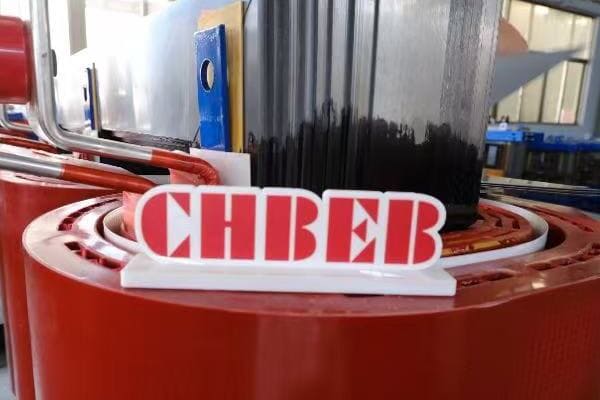
In this comprehensive guide, I’ll walk you through the environmental advantages of dry type transformers. From their inherently greener design to their role in sustainable building projects, you’ll discover why these transformers are becoming the go-to choice for environmentally conscious power distribution solutions.
Why Dry Type Transformers Are Greener by Design?
Have you ever wondered why dry type transformers are considered more environmentally friendly than their oil-filled counterparts? The answer lies in their fundamental design. But what specific features make them a greener choice for modern power distribution needs?
Dry type transformers are inherently greener due to their oil-free design. This eliminates the risk of oil leaks or spills, removes the need for oil handling and disposal, and significantly reduces the environmental footprint during operation. Their design also makes them safer for indoor and high-density urban areas.
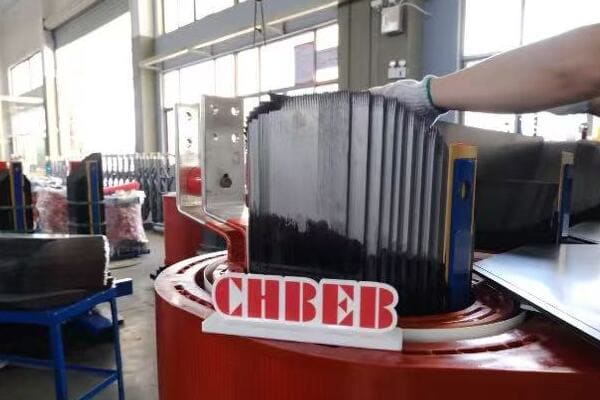
Key Environmental Advantages of Dry Type Transformers
Let’s explore the green features of dry type transformers:
- No risk of oil leaks or spills
- No need for oil handling, storage, or disposal
- Lower environmental footprint during operation
- Safer for indoor and high-density areas
Elimination of Oil-Related Risks
The absence of oil in dry type transformers is a game-changer for environmental safety:
- Zero risk of soil or water contamination from oil leaks
- No need for costly oil containment systems
- Reduced fire hazard and associated environmental risks
I once worked on a project replacing oil-filled transformers in an environmentally sensitive area near a water source. The switch to dry type units eliminated the constant worry about potential oil spills and their devastating environmental impact.
Simplified Maintenance and Reduced Waste
Dry type transformers offer significant environmental benefits through their maintenance profile:
- No oil testing or replacement required
- Reduced waste generation throughout the transformer’s lifecycle
- Lower risk of contamination during maintenance procedures
In a recent industrial project, we calculated that switching to dry type transformers would eliminate the need to dispose of thousands of liters of transformer oil over the equipment’s lifetime, significantly reducing the facility’s environmental footprint.
Enhanced Safety in Urban Environments
The design of dry type transformers makes them ideal for densely populated areas:
- Reduced fire load in buildings
- No oil smoke or fumes in case of failure
- Safer installation in multi-story buildings and underground facilities
I recall a project for a high-rise office building where the use of dry type transformers allowed for safer, more flexible installation options, reducing the overall environmental impact of the building’s power infrastructure.
Lower Carbon Footprint in Manufacturing and Transportation
The production and transportation of dry type transformers often have a lower environmental impact:
- No need for oil production and transportation
- Generally lighter weight, reducing transportation emissions
- Simpler manufacturing process with fewer environmentally sensitive materials
Here’s a quick comparison of environmental aspects:
| Aspect | Dry Type Transformer | Oil-Filled Transformer |
|---|---|---|
| Oil Spill Risk | None | Present |
| Maintenance Waste | Minimal | Significant (oil disposal) |
| Fire Safety | High | Moderate |
| Urban Suitability | Excellent | Limited |
| Manufacturing Impact | Lower | Higher |
By choosing dry type transformers, you’re not just selecting a piece of equipment; you’re making a decision that positively impacts the environment throughout the transformer’s entire lifecycle. From manufacturing to installation, operation, and eventual decommissioning, dry type transformers offer a greener alternative at every stage.
Fire Safety Advantages: F1 and Self-Extinguishing Materials?
Are you worried about fire risks associated with electrical equipment in your facility? You’re not alone. Fire safety is a top concern for many building managers and engineers. But did you know that dry type transformers offer significant fire safety advantages over traditional oil-filled units?
Dry type transformers excel in fire safety due to their F1 class insulation and self-extinguishing materials. The absence of flammable oil significantly reduces fire load, making them compliant with strict NFPA and IEC fire zone restrictions. This makes them ideal for hospitals, schools, and high-rise buildings where fire safety is paramount.
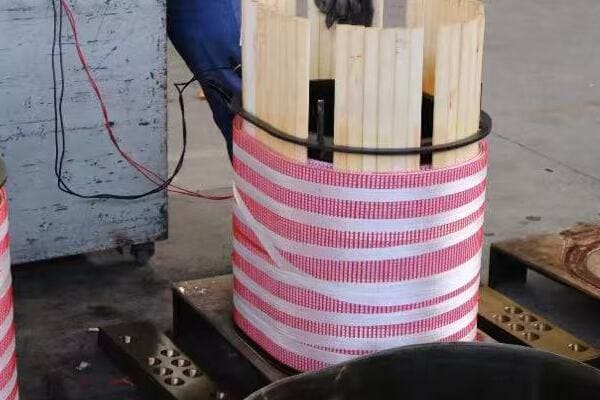
Key Fire Safety Features of Dry Type Transformers
Let’s explore the fire safety advantages in detail:
- F1 class insulation (IEC 60076-11)
- Self-extinguishing resin (halogen-free)
- No flammable oil = lower fire load
- Compliant with NFPA / IEC fire zone restrictions
F1 Class Insulation: The Gold Standard in Fire Safety
F1 class insulation is a game-changer for transformer fire safety:
- Highest fire safety classification for transformers
- Limited combustibility and flame propagation
- Minimal emission of toxic gases in case of fire
I once worked on a hospital renovation project where F1 class dry type transformers were essential. Their superior fire safety characteristics not only met stringent regulations but also provided peace of mind for the hospital administration, knowing that patient safety was enhanced.
Self-Extinguishing Materials: Active Fire Prevention
The use of self-extinguishing resins adds an extra layer of fire protection:
- Actively resists flame spread
- Halogen-free composition reduces toxic emissions
- Contributes to overall building fire safety
In a recent data center project, we chose dry type transformers with self-extinguishing resins. This decision was crucial in meeting the client’s strict fire safety requirements and insurance standards for critical infrastructure.
Reduced Fire Load: A Safer Building Environment
The absence of oil significantly reduces the fire load in buildings:
- No risk of oil-fueled fires
- Lower overall fire risk for the facility
- Simplified fire protection systems in transformer rooms
I recall a high-rise office project where using dry type transformers allowed us to place electrical rooms on higher floors. This was possible due to the reduced fire load, offering more flexible building design options while maintaining stringent safety standards.
Compliance with Fire Zone Restrictions
Dry type transformers easily meet strict fire safety regulations:
- Compliant with NFPA 70 requirements for indoor installations
- Meet IEC standards for fire-resistant electrical equipment
- Ideal for use in designated fire zones within buildings
Here’s a comparison of fire safety aspects:
| Aspect | Dry Type (F1 Class) | Oil-Filled Transformer |
|---|---|---|
| Fire Resistance | High | Moderate |
| Toxic Emissions | Minimal | Potentially High |
| Fire Load | Low | High |
| Indoor Use Safety | Excellent | Limited |
| Compliance with Fire Codes | Easy | Often Challenging |
By choosing F1 class dry type transformers with self-extinguishing materials, you’re not just buying a transformer; you’re investing in the safety of your facility and its occupants. These transformers provide a level of fire safety that is unmatched by traditional oil-filled units, making them the preferred choice for environments where safety cannot be compromised.
RoHS, REACH, and Other Green Compliance Standards?
Are you struggling to navigate the complex world of environmental compliance for your electrical equipment? You’re not alone. Many professionals find it challenging to keep up with evolving green standards. But what if your transformer choice could simplify this process and ensure you’re meeting all necessary environmental regulations?
Dry type transformers are designed to meet stringent environmental standards including RoHS and REACH. They typically use compliant materials free from restricted substances like lead, mercury, and cadmium. Many are manufactured in ISO 14001 certified facilities, ensuring environmental management best practices throughout production.
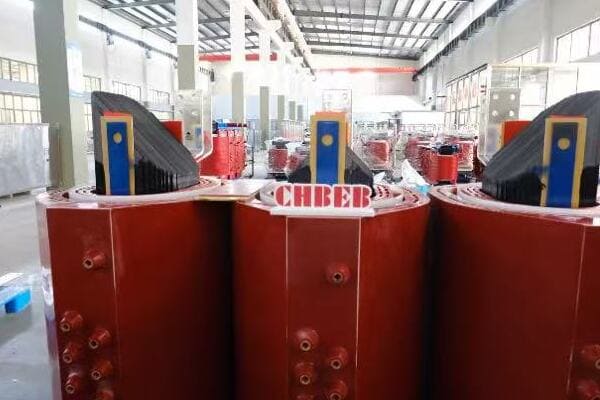
Green Compliance Checklist for Dry Type Transformers
When selecting a dry type transformer, look for these key compliance features:
✅ RoHS-compliant (no lead, mercury, cadmium, etc.)
✅ REACH-compliant materials
✅ Halogen-free insulation system
✅ UL / CE / ISO 14001 certified manufacturing
RoHS Compliance: Eliminating Hazardous Substances
RoHS (Restriction of Hazardous Substances) compliance is crucial for environmental safety:
- Ensures the transformer is free from restricted substances
- Reduces environmental impact during manufacturing and disposal
- Supports global efforts to reduce electronic waste
I once worked on a project exporting transformers to the European Union. RoHS compliance was non-negotiable, and our dry type units easily met these stringent requirements, simplifying the export process and ensuring market access.
REACH Compliance: Safe Chemical Management
REACH (Registration, Evaluation, Authorization and Restriction of Chemicals) compliance demonstrates responsible chemical use:
- Ensures safe use of chemicals in transformer production
- Provides transparency about substances used
- Supports long-term environmental and health protection
In a recent project for a multinational corporation, REACH compliance was a key factor in their supplier selection process. Our ability to provide fully compliant dry type transformers was a significant advantage in securing the contract.
Halogen-Free Insulation: A Cleaner, Safer Choice
Halogen-free insulation systems offer environmental and safety benefits:
- Reduced toxic emissions in case of fire
- Lower environmental impact during production and disposal
- Improved air quality in indoor installations
I recall a data center project where the client specifically requested halogen-free transformers to align with their strict environmental policies. This choice not only met their green requirements but also enhanced the overall safety of their facility.
Certified Manufacturing Processes
Transformers produced in certified facilities ensure environmental best practices:
- ISO 14001 certification guarantees environmental management standards
- UL and CE certifications often include environmental considerations
- Demonstrates commitment to sustainable manufacturing practices
Here’s a comparison of environmental compliance aspects:
| Compliance Aspect | Typical Dry Type Transformer | Traditional Oil-Filled Transformer |
|---|---|---|
| RoHS Compliance | Fully Compliant | May Require Special Versions |
| REACH Compliance | Generally Compliant | Varies |
| Halogen-Free | Often Standard | Rarely Available |
| Certified Manufacturing | Common (ISO 14001) | Varies |
By choosing dry type transformers that meet these green compliance standards, you’re not just purchasing equipment; you’re making a statement about your commitment to environmental responsibility. These transformers help you meet regulatory requirements, support sustainable practices, and contribute to a cleaner, safer environment for all.
Ideal for Green Buildings and LEED Projects?
Are you involved in green building projects or aiming for LEED certification? You might be wondering how your choice of electrical equipment can contribute to these goals. What if I told you that the right transformer selection could significantly boost your project’s green credentials?
Dry type transformers are ideal for green buildings and LEED projects due to their energy efficiency, reduced environmental impact, and safety features. They contribute to LEED credits in Energy & Atmosphere categories, support indoor air quality targets, and improve overall building energy performance ratings.
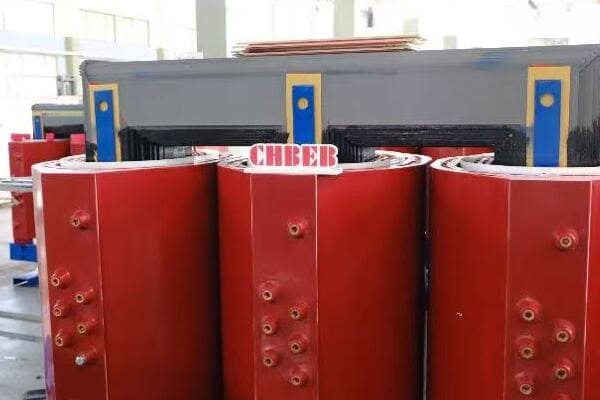
How Dry Type Transformers Support Green Building Initiatives
Let’s explore how these transformers fit into various green building scenarios:
| Project Type | Transformer Feature | Green Certification Support |
|---|---|---|
| LEED Building | Low-loss + no oil | Contributes to Energy & Atmosphere credits |
| Hospital | Fire safe, no emissions | Supports indoor air quality targets |
| Data Center | High-efficiency + compact | Improves energy performance ratings |
LEED Buildings: Boosting Energy & Atmosphere Credits
Dry type transformers can significantly contribute to LEED certification:
- Energy efficiency reduces overall building power consumption
- No-oil design aligns with sustainable site development goals
- Low electromagnetic emissions support healthy indoor environments
I recently worked on a LEED Gold office building project where the use of high-efficiency dry type transformers directly contributed to achieving additional points in the Energy & Atmosphere category. This helped push the project from Silver to Gold certification status.
Hospitals: Enhancing Safety and Air Quality
In healthcare settings, dry type transformers offer unique advantages:
- Fire safety features crucial for patient areas
- No oil means no risk of contamination
- Low noise operation supports healing environments
During a major hospital expansion project, we implemented dry type transformers throughout the facility. This choice not only met strict safety regulations but also supported the hospital’s goals for improved indoor air quality and patient comfort.
Data Centers: Maximizing Efficiency and Reliability
For data centers, dry type transformers provide essential benefits:
- High efficiency reduces overall energy costs
- Compact design allows for better space utilization
- Improved reliability with lower maintenance needs
In a recent hyperscale data center project, the use of advanced dry type transformers played a crucial role in achieving the facility’s aggressive power usage effectiveness (PUE) targets, directly impacting its green certification level.
Green Building Performance Metrics
Here’s how dry type transformers can impact various green building metrics:
- Energy Efficiency: Can reduce losses by up to 60% compared to standard units
- Indoor Environmental Quality: Zero emissions contribute to better air quality
- Innovation in Design: Advanced models can serve as showcase green technology
- Sustainable Sites: No oil eliminates risks of soil or water contamination
Consider this comparison for green building applications:
| Aspect | Dry Type Transformer | Oil-Filled Alternative |
|---|---|---|
| LEED Credit Potential | High | Limited |
| Indoor Air Quality Impact | Positive | Potential Concern |
| Energy Efficiency | Very High | Moderate to High |
| Safety in Green Spaces | Excellent | Good |
| Lifecycle Environmental Impact | Low | Moderate |
By choosing dry type transformers for your green building or LEED project, you’re not just selecting a piece of equipment; you’re making a strategic decision that aligns with and enhances your overall sustainability goals. These transformers offer a perfect blend of efficiency, safety, and environmental responsibility, making them an ideal choice for projects where green credentials are a priority.
Reduced Maintenance = Lower Environmental Impact?
Have you ever considered how equipment maintenance affects your facility’s environmental footprint? Many overlook this aspect, but it’s a crucial factor in long-term sustainability. So, how can the choice of a transformer impact your maintenance needs and, by extension, your environmental impact?
Dry type transformers significantly reduce maintenance requirements compared to oil-filled units. This translates to lower environmental impact through reduced waste generation, eliminated risk of oil contamination, and a longer service life. The simplicity of their maintenance regime also means fewer resources are needed over the transformer’s lifecycle.
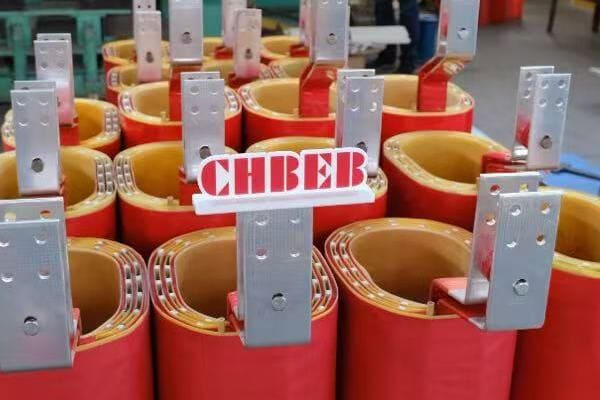
Key Environmental Benefits of Reduced Maintenance
Let’s explore how the low-maintenance nature of dry type transformers contributes to environmental protection:
- No oil testing or replacement
- No risk of oil contamination
- No need for containment pits
- Long service life reduces waste generation
Elimination of Oil-Related Maintenance
The absence of oil in dry type transformers removes several maintenance-related environmental risks:
- No periodic oil testing or filtration required
- Eliminates the need for oil disposal and replacement
- Reduces the risk of spills during maintenance procedures
I recall a project where we replaced oil-filled transformers with dry types in a water treatment facility. The elimination of oil-related maintenance not only reduced costs but also removed the constant worry about potential contamination of the water supply.
Simplified Inspection and Cleaning Procedures
Dry type transformers require minimal maintenance:
- Simple visual inspections are often sufficient
- Occasional cleaning with compressed air or vacuum
- No need for specialized oil handling equipment
In a recent data center project, the simplified maintenance of dry type transformers was a key factor in their selection. This not only reduced the environmental impact of maintenance activities but also minimized the risk of human error during servicing.
Extended Service Life and Reduced Waste
The durability of dry type transformers contributes to waste reduction:
- Typical lifespan of 20-30 years, often longer than oil-filled units
- Fewer replacements mean less manufacturing and disposal waste
- Many components are recyclable at end-of-life
I worked on an industrial facility upgrade where we calculated the lifecycle impact of switching to dry type transformers. The reduced need for replacements and maintenance over a 25-year period resulted in a significant reduction in waste generation and resource consumption.
Environmental Impact of Maintenance Activities
Consider these environmental aspects of transformer maintenance:
| Aspect | Dry Type Transformer | Oil-Filled Transformer |
|---|---|---|
| Waste Generation | Minimal | Significant (oil, filters) |
| Contamination Risk | Very Low | Moderate to High |
| Resource Consumption | Low | Higher (oil, parts) |
| Frequency of Intervention | Low | Regular |
| End-of-Life Disposal | Simpler, More Recyclable | Complex, Potential Hazardous Waste |
Case Study: Long-Term Environmental Impact
In a recent project for a large commercial complex, we conducted a 20-year environmental impact assessment comparing dry type and oil-filled transformers. Here are some key findings:
- Waste Reduction: The dry type option generated 95% less maintenance-related waste over its lifetime.
- Carbon Footprint: Reduced maintenance activities led to a 30% lower carbon footprint from service-related travel and operations.
- Water Protection: Elimination of oil removed the risk of water contamination, a critical factor for the nearby wetland ecosystem.
This study clearly demonstrated the long-term environmental benefits of choosing low-maintenance dry type transformers.
By opting for dry type transformers, you’re not just simplifying your maintenance routine; you’re making a choice that has far-reaching positive impacts on the environment. From reduced waste generation to lower risk of contamination, the benefits accumulate over the transformer’s entire lifecycle, contributing significantly to your facility’s overall environmental performance.
A Sustainable Choice for the Future of Power Distribution?
Are you wondering how your transformer choices today will impact the future of power distribution? As we move towards a more sustainable world, it’s crucial to consider how our infrastructure decisions align with long-term environmental goals. But how exactly do dry type transformers fit into this vision of a greener future?
Dry type transformers represent a sustainable choice for future power distribution needs. They align with global decarbonization goals, integrate well with renewable energy infrastructure, and are increasingly preferred in urban planning and ESG-driven procurement. Their eco-friendly design makes them ideal for the evolving landscape of sustainable power systems.
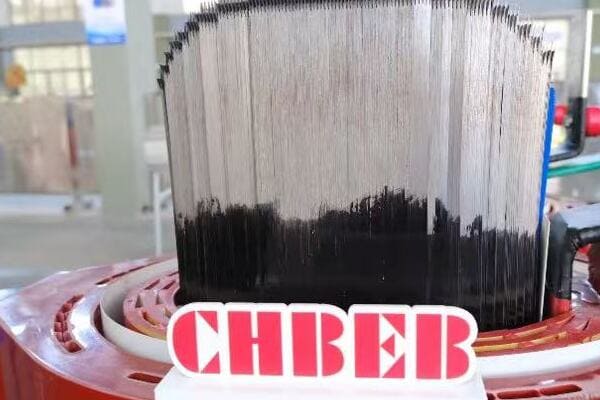
Key Aspects of Dry Type Transformers in Future Sustainability
Let’s explore how dry type transformers contribute to sustainable power distribution:
Alignment with Global Decarbonization Goals
Dry type transformers support the transition to a low-carbon economy:
- Higher efficiency reduces overall energy consumption and related emissions
- No oil means no risk of greenhouse gas emissions from leaks or disposal
- Longer lifespan reduces the carbon footprint associated with manufacturing and replacement
I recently consulted on a city-wide energy upgrade project where the switch to high-efficiency dry type transformers was projected to reduce the city’s carbon emissions by thousands of tons annually, directly contributing to their climate action plan.
Integration with Renewable Energy Infrastructure
These transformers are well-suited for renewable energy systems:
- Can handle the variable loads typical of solar and wind power
- Compact design ideal for offshore wind platforms and solar farms
- Environmental safety crucial for remote or sensitive installation sites
In a large-scale solar farm project, we implemented dry type transformers specifically designed for renewable applications. Their ability to handle fluctuating loads and withstand outdoor conditions was crucial for the project’s success and long-term sustainability.
Urban Planning and Smart City Initiatives
Dry type transformers are becoming a preferred choice in urban development:
- Safer for high-density areas due to reduced fire risk
- Lower noise levels suitable for residential and mixed-use zones
- Compact design allows for more flexible urban substation planning
During a recent smart city planning initiative, the use of dry type transformers allowed for more integrated power distribution within the urban landscape. Their safety and compact nature enabled innovative designs that blended substations seamlessly into the cityscape.
ESG-Driven Procurement Trends
Environmental, Social, and Governance (ESG) considerations are driving transformer choices:
- No-oil design aligns with environmental protection goals
- Improved safety features support social responsibility aspects
- Transparency in materials and manufacturing supports governance objectives
I’ve observed a growing trend among corporate clients where ESG factors are becoming primary drivers in equipment selection. In several recent projects, the environmental benefits of dry type transformers were key in meeting the clients’ sustainability reporting requirements.
Public Sector Leadership
Government and public institutions are increasingly mandating eco-friendly options:
- Many public projects now require "non-oil" electrical equipment
- Educational institutions leading in adopting sustainable technologies
- Healthcare facilities prioritizing patient and environmental safety
In a recent government infrastructure project, the specification explicitly called for dry type transformers as part of their commitment to sustainable and safe public facilities.
Here’s a comparison of how dry type transformers align with future sustainability trends:
| Sustainability Aspect | Dry Type Transformer | Traditional Oil-Filled |
|---|---|---|
| Carbon Footprint | Lower | Higher |
| Renewable Energy Compatibility | Excellent | Good |
| Urban Integration | Highly Suitable | Challenging |
| ESG Alignment | Strong | Moderate |
| Future-Proofing | High | Moderate |
By choosing dry type transformers, you’re not just making a decision for today; you’re investing in a sustainable future for power distribution. These transformers represent a forward-thinking approach that aligns with global environmental goals, adapts to the changing landscape of energy generation, and meets the evolving demands of urban development and corporate responsibility.
As we look to the future, the role of dry type transformers in creating a more sustainable and resilient power infrastructure becomes increasingly clear. Their environmental benefits, safety features, and adaptability make them an ideal choice for those looking to build power systems that will stand the test of time while minimizing environmental impact.
Conclusion
Dry type transformers offer significant environmental benefits through their oil-free design, enhanced fire safety, and compliance with green standards. They reduce maintenance-related environmental impacts and align with sustainable building practices. As we move towards a greener future in power distribution, dry type transformers stand out as a responsible and forward-thinking choice.
Free CHBEB Transformer Catalog Download
Get the full range of CHBEB transformers in one catalog.
Includes oil-immersed, dry-type, pad-mounted, and custom solutions.
Quick Message
Request A free quote
We'd like to work with you
- +86 15558785111
- [email protected]
- +86 15558785111
What We Do
CHINA BEI ER BIAN (CHBEB) GROUP, with 218 million in registered capital, originated from Beijing Beierbian Transformer Group. Headquartered in Beijing for R&D, it operates major production bases in Nanjing and Yueqing, producing high-quality products.
Latest Product
address
BeiJing
No 3,RongJing East Road,BeiJing Economic Technological Development Area,BeiJing,China
JiangSu
No 7️Xiangfeng Road,Jiangning,NanJing,JiangSu,China
WenZhou
No.211, Wei 16 Road, Industrial Zone, Yueqing, Wenzhou, Zhejiang, China.
XiangYang Industrial Zone ,YueQing,WenZhou,ZheJiang,China
contact us
- [email protected]
- +86 13057780111
- +86 13057780111
- +86 15558785111
Copyright © Bei Er Bian Group


